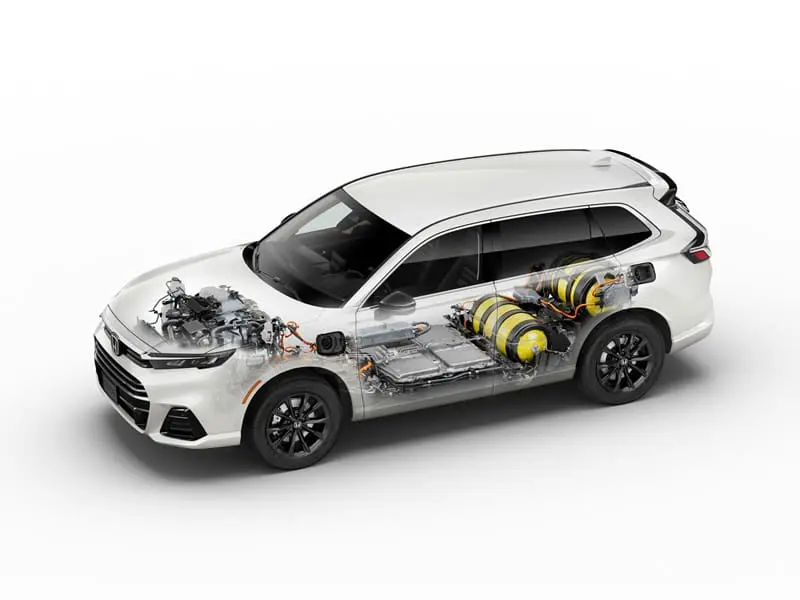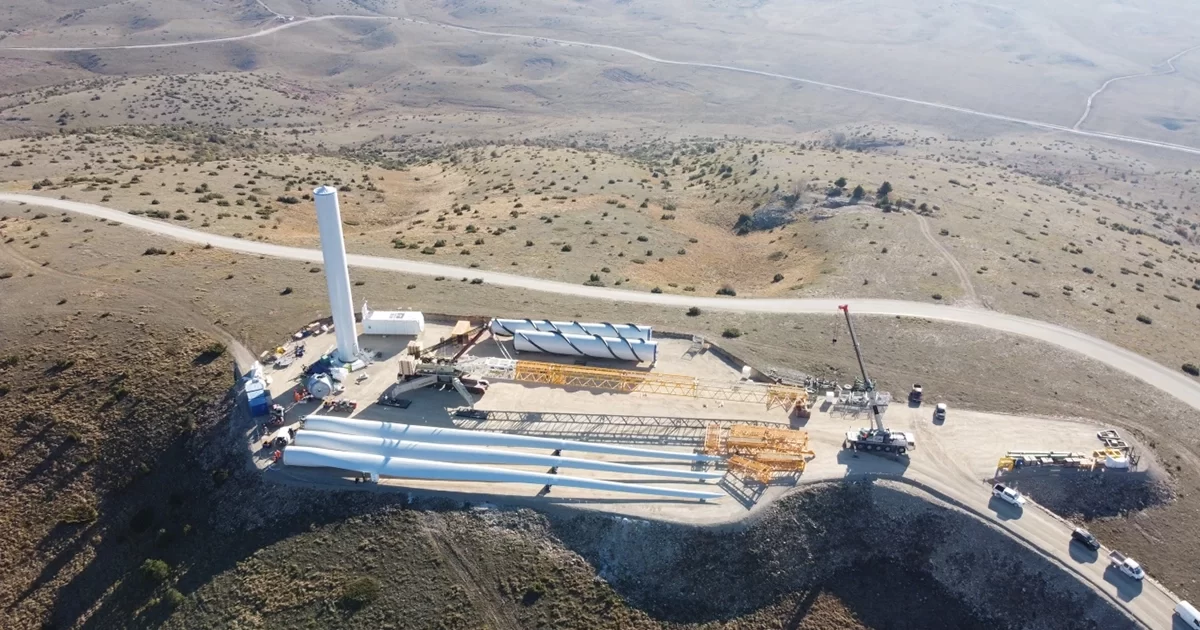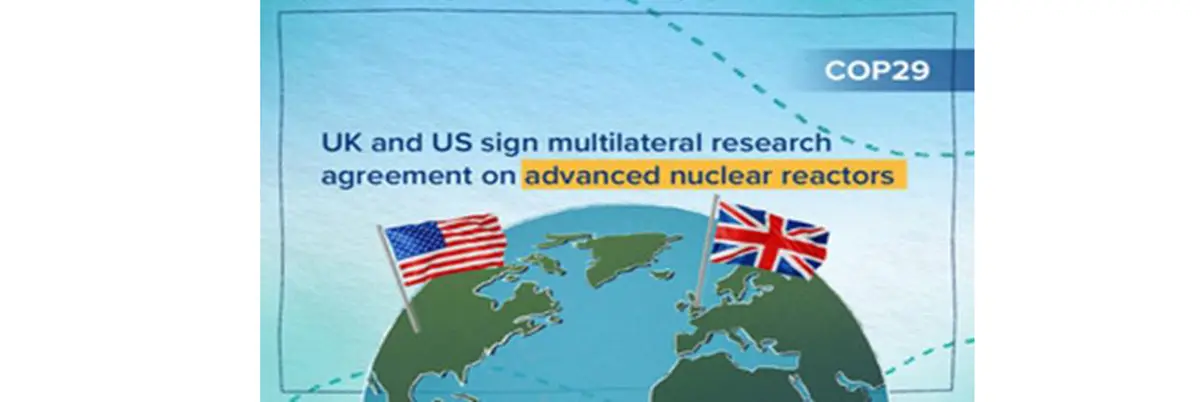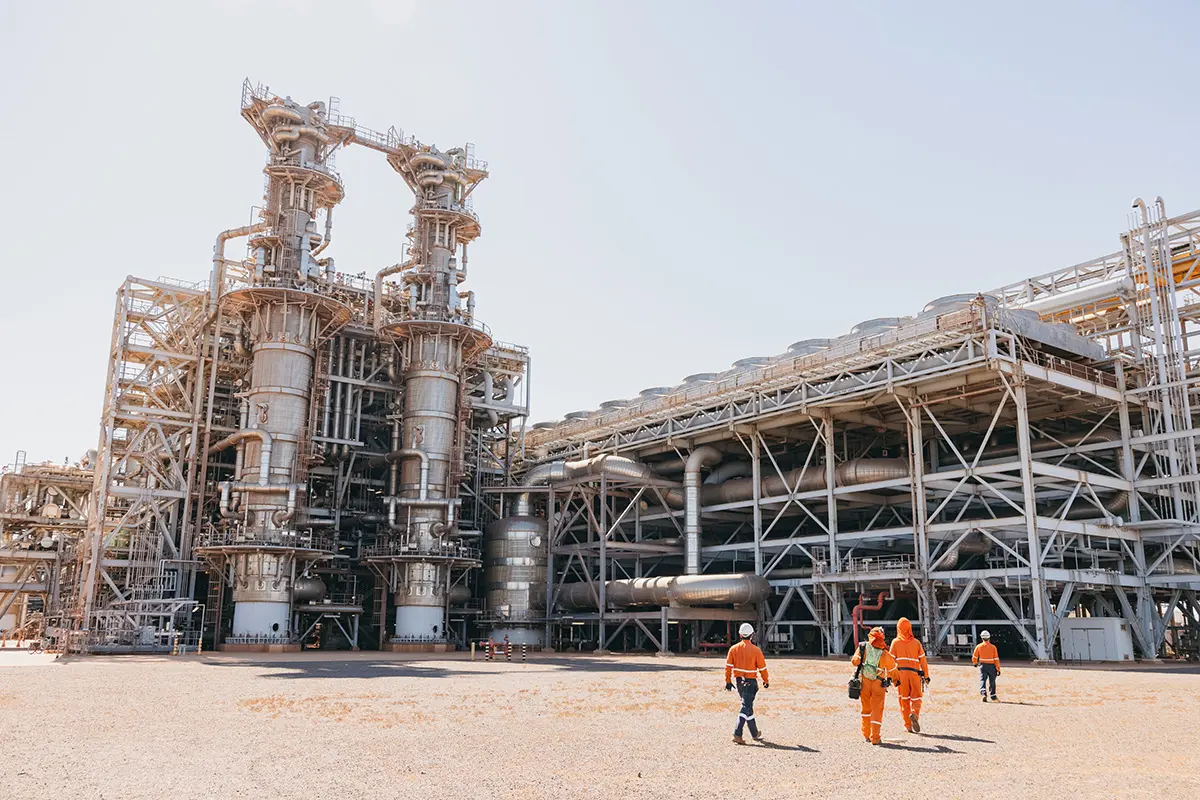
Meet The Hydrogen-Powered Honda CR-V

Honda revealed America’s first production plug-in hydrogen fuel cell electric vehicle (FCEV), the 2025 Honda CR-V e:FCEV. The compact vehicle received a 270-mile (435-km) driving range rating by the US Environmental Protection Agency (EPA). CR-V e:FCEV combines an all-new US-made fuel cell system along with plug-in charging capability designed to provide up to 29 miles (47 km) of plug-in Level 2 EV driving around town with the flexibility of fast hydrogen refueling for longer trips.
“Leveraging Honda fuel cell technology expertise continues to play a critical role in our global goal to achieve carbon neutrality for all products and corporate activities by 2050,” said Mamadou Diallo, senior vice president of auto sales for American Honda Motor Co. “Honda has laid out an electrification strategy leading to 100% zero-emissions automobile sales by 2040, including the introduction of both battery-electric and FCEVs like this new CR-V e:FCEV model.”
The 2025 Honda CR-V e:FCEV will be available for customer leasing in California beginning later this year. Standard features include HondaLink with expanded capabilities including hydrogen station information in addition to charging and power supply data. For additional convenience, the included Honda Power Supply Connector uses a 110-volt power outlet that can deliver up to 1500 watts of power, turning CR-V e:FCEV into a clean power source capable of running small home appliances, portable air conditioners, power tools, camping equipment, and more.
Honda’s market experience with hydrogen fuel cell vehicles began with the introduction of the Honda FCX in December 2002, the world’s first zero-emissions FCEV to receive certification for everyday use from both the EPA and the California Air Resources Board, as well as the first FCEV leased to individual customers.
The CR-V e:FCEV is built at Honda’s Performance Manufacturing Center in Marysville, Ohio, and is the only fuel cell electric passenger vehicle made in America. The five-passenger vehicle is the first application of the second-generation Honda Fuel Cell Module, produced at Fuel Cell System Manufacturing LLC in Michigan, offering improved durability, higher efficiency, increased refinement, and lower cost compared to Honda’s previous generation fuel cell system.
Design And Technology
Distinctly styled from CR-V turbo and hybrid models, the exterior design of the Honda CR-V e:FCEV has new body panels forward of the A-pillar, unique designs for the liftgate, rear fascia and large 18-in., 10-spoke black wheels.
Highlighting the new styling is a low upright grille design and long hood. The model’s vertical taillights make this zero-emissions recognizable as a CR-V from the rear. To maximize driving range, Honda said that aerodynamic performance has been further optimized with a full floor undercover and unique front spoiler and strake.
America’s best-selling CUV of the past quarter century, the Honda CR-V’s cabin features clean surfacing, high-quality feel of materials and plenty of cabin space and cargo capacity. As in other CR-V models, a striking metal honeycomb mesh spanning the dash serves both form and function, concealing the air vents that would otherwise mar the uncluttered and harmonious design.
Honda will offer CR-V e:FCEV as a single Touring model with standard features that include 10.2-in. digital instrumentation, 9-in. HD touchscreen, wireless Apple CarPlay and Android Auto compatibility, wireless phone charging, a 12-speaker Bose premium audio system, power adjustable heated front seats, heated steering wheel, dual zone climate control, handsfree access power tailgate, parking sensors, and sustainable materials including bio-based leather seat upholstery.
The new CR-V e:FCEV comes standard with the same cutting safety technologies as other CR-Vs, including Advanced Compatibility Engineering architecture and the Honda Sensing suite of safety and driver-assistive technologies.
The 2025 CR-V e:FCEV has a front-mounted, single-motor producing 174 horsepower and 229 lb.-ft. of torque. Honda engineers have optimized the CR-V e:FCEV structure and suspension to deliver the same driving experience as other CR-V models. Compared to CR-V turbo and hybrid models, rear lateral rigidity is increased 10%, rear torsional rigidity has improved 9%, and its MacPherson strut front suspension and multilink rear suspension have been completely retuned with specific springs, amplitude-sensitive dampers, and stabilizer bars front and rear to optimize responsiveness while maintaining a smooth ride.
CR-V e:FCEV qualifies for single-occupant California high occupancy vehicle (HOV) lane access. The driver can customize the driving experience with four selectable drive modes: Normal, Eco, Sport, and Snow.
Key Specifications & Features
| ENGINEERING (Honda Fuel Cell Module) |
|
| Estimated Power Output | 92.2 kW |
| ENGINEERING (Electric Motor) |
|
| Peak Horsepower | 174 hp |
| Peak Torque | 229 lb.-ft. |
| BATTERY | |
| Capacity | 17.7 kWh |
| FUEL | |
| MPGe Ratings (City / Hwy / Combined) | 61 / 52 / 57 |
| EV Range (miles) | 29 |
| Driving Range (miles) | 270 |
| Required Fuel | Compressed Hydrogen Gas |
| Fuel Tank Pressure | 10,000 psi |
| Fuel Tank Capacity (kg) | 4.3 |
| WHEELS AND TIRES | |
| Wheel Size | 18-in. |
| Tire Size | 235/60R18 |
| EXTERIOR MEASUREMENTS | |
| Wheelbase (in.) | 106.3 |
| Length (in.) | 187.6 |
| Height (in.) | 66.6 |
| Width (in.) | 73.4 |
| Track (in., front/rear) | 63.4 / 64.0 |
| KEY FEATURES | |
| Honda Sensing | • |
| Advanced Compatibility Engineering (ACE) Body Structure | • |
| 10.3-inch Digital Instrument Display | • |
| 9-Inch HD Touchscreen | • |
| Wireless Apple CarPlay, Android Auto Compatibility | • |
| Heated Front Seats | • |
| Heated Steering Wheel | • |
| Wireless Phone Charging (Qi) | • |
| Bose Premium Audio (12-speaker) | • |
| Driving Modes | Normal, Eco, Sport, Snow |
(Data Source: Honda)
Honda Fuel Cell System Enters Mass Production
Marking the first-time hydrogen fuel cells have been produced at scale, mass production of the new Honda fuel cell (FC) system has begun at Fuel Cell System Manufacturing LLC (FCSM), a joint venture production facility with General Motors (GM) in Brownstown, Michigan. Honda outlined key strategies it is undergoing to increase the use of hydrogen fuel cell technology as the company looks to expand its hydrogen business and achieve its global goal of zero environmental impact, including carbon neutrality for all products and corporate activities by 2050.
“Our new fuel cell system is at the core of Honda hydrogen technology and our strategy to expand the range of applications that use hydrogen to facilitate the decarbonization of society,” said Jay Joseph, vice president of sustainability and business development at American Honda Motor Co. Inc. “This is not simply a choice between battery electric or hydrogen fuel cell technology, but selecting the right energy source, in the right place, for the right purpose, to achieve carbon neutrality as quickly and efficiently as possible.”
The new fuel cell system is key to Honda’s hydrogen business strategy. Co-developed by Honda and GM over the last decade, the new Honda fuel cell system advances performance and doubles durability while reducing cost by two-thirds compared to the previous generation system.
Honda has been conducting research and development of hydrogen technologies and FCEVs for more than 30 years and has deployed fuel-cell technology through extensive real-world testing and customer use cases, including the first government fleet customers and first-ever retail customer leasing program for FCEVs.
Triple Action To Zero Approach
Honda is working toward its global goal of zero environmental impact by 2050 through its “Triple Action To Zero” approach, including not only its products, but the entire product lifecycle including corporate activities. The first pillar is carbon neutrality for all Honda products and corporate activities by 2050. The second pillar is resource circulation. Using 100% sustainable materials to create a circular economy will enable Honda to recycle or reuse every bit of the materials from its vehicles, reprocess them back to raw materials, and reuse those materials in the creation of new products. In short, Honda will make new vehicles out of old Honda vehicles. The third pillar is the use of clean, renewable energy, including electrification and hydrogen.
Honda Hydrogen Business Strategy
In its initiatives, Honda sees hydrogen as one of the high-potential energy carriers to support this direction of renewable energy and electrification. The “hydrogen circulation cycle,” which starts with renewable energy, consists of three phases — generate, store/transport, and use. To be more specific, with the use of water electrolysis technology, excess electricity derived from renewable energy sources can be used to create “green hydrogen,” that can be stored indefinitely with no energy loss. Using fuel cell technology, this hydrogen can then be converted back into zero-emissions electricity for a variety of purposes, including stationary back up power to account for fluctuations in power generation due to seasonality and weather conditions. Stored hydrogen can also be used to transport energy to where it is needed via land, sea, and pipeline.
Honda will expand the applications of the new Honda fuel cell system beyond FCEVs to various internal and external applications, thereby serving to stimulate demand for hydrogen and facilitating the carbon neutrality of society through hydrogen.
Honda has identified four core domains for the initial use of its new fuel cell system: FCEVs, commercial fuel cell vehicles, stationary power stations, and construction machinery. While initial FCSM production will be used in support of Honda internal initiatives and FCEV sales, Honda is exploring external fuel cell business opportunities with a goal to begin external deliveries of the fuel cell system modules in the near future. The company envisions initial sales of 2000 units per year and then expanding sales in stages.
FCEV
This year, Honda will launch an all-new CR-V FCEV. Built at the Honda Performance Manufacturing Center in Marysville, Ohio, using domestic and globally sourced parts, it will be the only fuel cell electric passenger vehicle made in America.
Commercial Vehicles And Construction
In the area of commercial vehicles, the GIGA FUEL CELL, a zero-emissions fuel cell-powered heavy-duty truck currently being co-developed by Isuzu Motors Limited and Honda Motor Co. Ltd. was shown for the first time at the Japan Mobility Show 2023. In addition to conducting joint research on fuel cell heavy-duty trucks, the two companies have begun demonstration testing of a prototype model on public roads in Japan in December 2023, and plan to introduce the production model to market in 2027 by fully leveraging the technology, experience, and knowledge gained through the joint research.
The GIGA FUEL CELL, a zero-emissions fuel cell-powered heavy-duty truck currently being co-developed by Isuzu Motors Limited and Honda Motor Co. Ltd. was shown for the first time at the Japan Mobility Show 2023. Honda is preparing a proof-of-concept Class 8 hydrogen fuel cell truck in the United States and is in talks with potential customers. Honda also will take initiative to apply its fuel cell system to construction equipment such as excavators and wheel loaders, contributing to the realization of carbon neutrality for construction machinery.

In order for more businesses to actively use fuel cell systems, Honda is working to develop partnerships that bolster the overall hydrogen ecosystem and ensure a streamlined offering of hydrogen services. This includes generation of hydrogen, workforce development, and aftersales maintenance and support.
Stationary Fuel Cell Power Stations
Honda began demonstration testing of a stationary fuel cell power station on its Torrance, California, campus in March 2023, marking the company’s first step toward future commercialization of zero-emissions backup power generation. The fuel cell power station supplies clean and quiet emergency backup power to Honda’s data center. In December 2023, Honda also announced a similar joint project in Japan where Honda will establish a stationary fuel cell station to power a Mitsubishi data center.
Backup power systems using hydrogen fuel cells offer a promising future for clean, yet reliable and high-quality power generation, especially when operating on “green hydrogen” made from renewable sources, with water vapor as the only emissions.

Future stationary fuel cell (FC) units intended for commercialization will use the new Honda FC system. In the coming years, Honda will begin applying stationary FC power station technologies now under development — featuring a next-generation FC system with further cost reduction and improved performance to Honda facilities and data centers globally.
Establishment Of Hydrogen Ecosystems
To achieve widespread use of fuel cell systems, it is critical to establish hydrogen ecosystems that include hydrogen supply. Honda has been supporting the expansion of hydrogen station networks in Japan by participating in the Japan Hydrogen Station Network Joint Company (Japan H2 Mobility/JHyM) and in North America by supporting hydrogen station businesses such as FirstElement Fuel and others. Honda will also participate in hydrogen generation projects organized by national and local governments that currently use large volumes of imported hydrogen at ports and other locations. Through these initiatives, Honda will work to build partnerships with companies involved in this new area.
In Japan, working toward the establishment of a hydrogen ecosystem, together with Marubeni Corporation and Iwatani Corporation, Honda has begun discussing prospects for hydrogen supply and the use of fuel cell commercial vehicles. In Europe, Honda is currently planning for demonstration testing of an energy ecosystem that combines renewable energy and hydrogen.
Hydrogen Technologies In Outer Space
Honda is conducting advanced research and development of hydrogen technologies while envisioning use in outer space, another potential area where hydrogen technologies such as a fuel cell system and high differential pressure water electrolysis technologies can be used. In addition to water and food, people need oxygen, as well as hydrogen for fuel and electricity for various activities supporting life in space.
To enable sustainable space activities, it is necessary to reduce the need to resupply these resources from Earth as much as possible. One of the solutions to this challenge is to create a “circulative renewable energy system,” combining a high differential pressure water electrolysis system that produces oxygen and hydrogen using solar energy to electrolyze water, and a fuel cell system that generates electricity and water from oxygen and hydrogen.
To create such a system, Honda conducted joint research and development with the Japan Aerospace Exploration Agency (JAXA) during the 2021 and 2022 fiscal years (period ended March 31, 2022). Moreover, in 2022, Honda signed a research and development contract with JAXA regarding the “circulative renewable energy system” designed to supply electricity to maintain the functionality of the living space and various systems of lunar rovers.
Based on this contract, Honda will be commissioned by JAXA to first conduct concept studies, then to develop a “breadboard model,” an early-stage prototype, by the end of the 2024 fiscal year (ending March 31).









